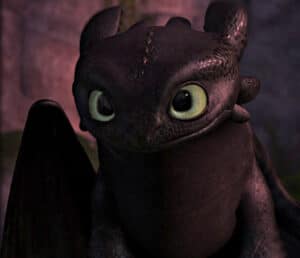Unless you live in China—or in a community with strong ties to Chinese culture—you probably haven’t heard of Ne Zha 2. But in just a few short weeks, this animated epic has pulled off something that seemed impossible: it’s out-earned every Pixar, Disney, and DreamWorks movie ever made.
Released on January 29, 2025, to coincide with the start of Lunar New Year, Ne Zha 2 has raked in a staggering $2.15 billion worldwide. That makes it the highest-grossing animated film of all time, edging past Inside Out 2 and shattering records once thought untouchable.
But here’s the real kicker: it wasn’t made in Hollywood, it’s not in English, and it cost just $80 million to produce. Instead, it’s a sequel to a Chinese animated hit rooted in centuries-old mythology—and it’s become more than just a box office smash. It’s a cultural earthquake.
What Is Ne Zha 2—and Why Is It So Big in China?

To understand why Ne Zha 2 is resonating so deeply, you have to start with the legend behind it.
Ne Zha is a household name in Chinese folklore—a rebellious, fire-wielding deity often depicted as a mischievous young boy who fights dragons and defies the heavens. His story comes from the 16th-century novel Investiture of the Gods, but it’s been retold in countless books, operas, and cartoons over the years.
The first Ne Zha film, released in 2019, modernized the legend with cutting-edge animation, a big heart, and surprisingly complex storytelling. It became a cultural juggernaut, earning over $700 million and kicking off a new era of Chinese animated filmmaking.
Ne Zha 2, directed by Yang Yu (aka Jiaozi), picks up right where the original left off—only this time, the stakes are even higher. The film plunges deeper into Chinese mythology, with Ne Zha and his one-time rival Ao Bing fighting both demons and the heavenly establishment in a race to save their world—and each other.
How Ne Zha 2 Broke Every Box Office Rule
The numbers behind this movie are genuinely wild:
-
It hit $1 billion in just 12 days—faster than any animated film in history.
-
It soared past $2 billion in just over a month.
-
It became the highest-grossing movie ever in a single market, pulling in over $2 billion from China alone, beating The Force Awakens’ record in the U.S.
All of that from a movie that cost a fraction of your average Disney tentpole. Instead of relying on flashy global marketing, Ne Zha 2 tapped into something deeper: national pride, mythological resonance, and word-of-mouth buzz so strong that showings in China sold out instantly—some with lines wrapping around city blocks.
Even internationally, the momentum is building. Though its full global rollout is still in progress, limited screenings in the U.S., Europe, and Southeast Asia have already sold out, especially among the Chinese diaspora. The premiere at Grauman’s Chinese Theatre in Los Angeles? Packed.
A Cultural Movement, Not Just a Movie

What makes Ne Zha 2 special isn’t just how many people are seeing it—it’s why they’re showing up.
This wasn’t just a movie release—it was a national event. Companies like Xiaomi bought out theaters so their employees could attend. Families made it part of their Lunar New Year traditions. On social media, it became a source of cultural pride and identity. For many viewers, especially younger ones, it was the first time they saw a homegrown blockbuster that felt as big—or bigger—than anything from Hollywood.
And that emotional core starts with the film’s creator. Jiaozi, the director, is a self-taught animator who once spent years unemployed, teaching himself film in his living room. He turned that scrappy origin into a visual effects powerhouse, leading a team of over 4,000 artists across 138 studios to bring Ne Zha 2 to life. His underdog story mirrors Ne Zha’s own—and that makes the whole experience hit even harder.
Why This Changes the Game
Ne Zha 2 isn’t just a commercial success—it’s a turning point. It proves you don’t need a Hollywood studio or an English-language script to make a global box office smash. You just need a great story, told authentically and with heart.
The film’s blend of Chinese aesthetics, emotional storytelling, and mythological depth struck a chord with audiences, and it’s opened the door for other non-Western studios to dream bigger. Suddenly, Chinese animation isn’t just “catching up”—it’s leading the charge.
Whether Hollywood is ready for it or not, Ne Zha 2 has sent a clear message: the future of global animation may not come from California. It might just rise from the East—with a fiery chariot and a demon-slaying kid at the helm.








